 | The Coming of Spring in MabletonApril 5-12, 2016 |

The fact that all the trees had been bare two weeks ago enhanced our wonder at the explosion of color that has just happened in the front yard. In a span of about three days, the Japanese maple put out all these colorful leaves! April 5. |  |
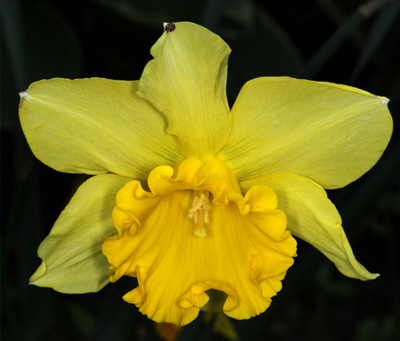 | 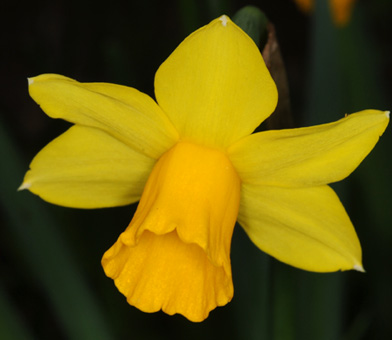 |
The bright yellow row of jonquils in front of the house is thanks to Marty, who planted them while we were out of town. The one at right above is one of the miniature jonquil blooms, which are about half the size of the larger one above. | 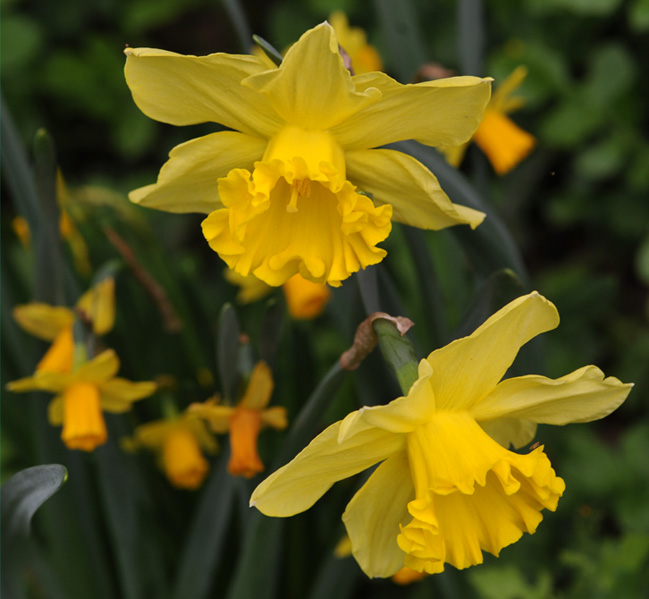 |
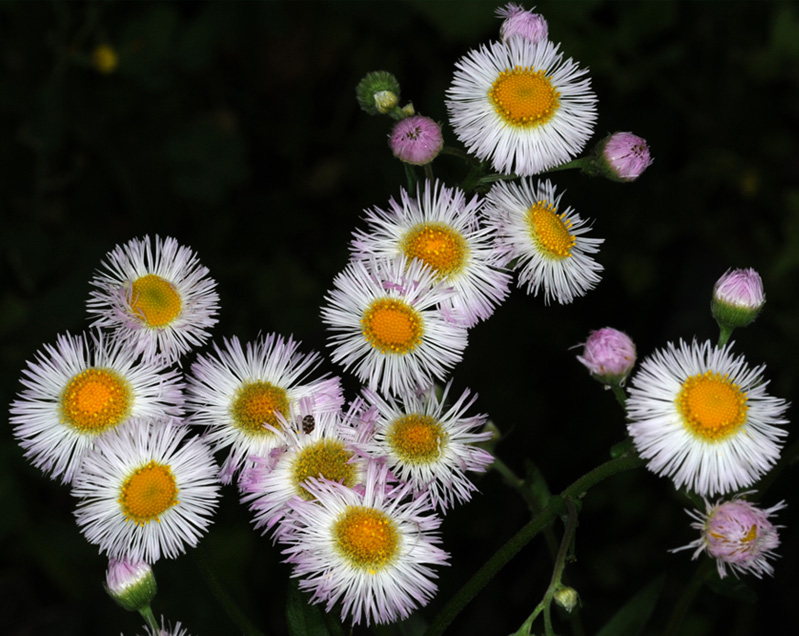
On April 11 when we had a guy coming to check the air conditioner, we went around back and had to wade through quite a stand of new spring weeds. But wait a minute! Some of these weeds are beautiful when you look at them up close. So Chad and I had quite a conversation about the intricacy of the things God has made, even if they are weeds. This weed is called daisy fleabane following an old superstition that dried clumps of it would rid a dwelling of fleas. That turns out not to be true, but its leaves are edible, and serve as a diuretic and a calmer of digestive ailments.
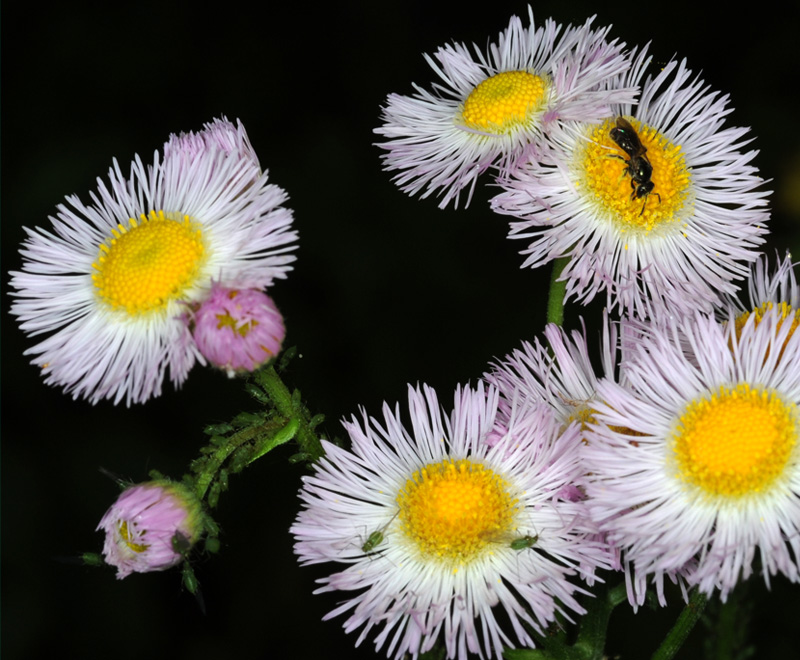
It was not until I examined this photo closeup that I realized that I had shown that these plants are edible to lots of other creatures as well. I had photographed a whole colony of what appear to be green aphids which find the daisy fleabane to be quite tasty. | 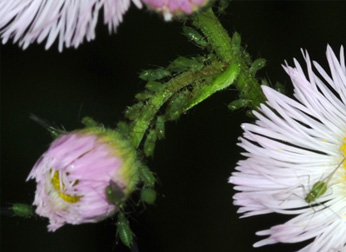 |
 | This tiny bee must have really fine hairs on its legs and abdomen to pick up the yellow pollen. The flower is only about 3/4 of an inch across, so the bee is less than 1/4". |

Once again, I saw things upon close examination of the photo that I didn't see when I took it. The bee is loaded with pollen, and it looks like he may have gotten it by walking all around that flower, because I don't see loose pollen on that yellow head. But note that the other flower has an abundance of loose pollen grains on it.

Every now and then, Rod gets overcome by his desire to be a "small-game hunter", and has stalked this tiny sweat bee who is visiting the daisy fleabane plants. The bee is only about a quarter-inch long, but you can see that he is an efficient carrier of yellow pollen.
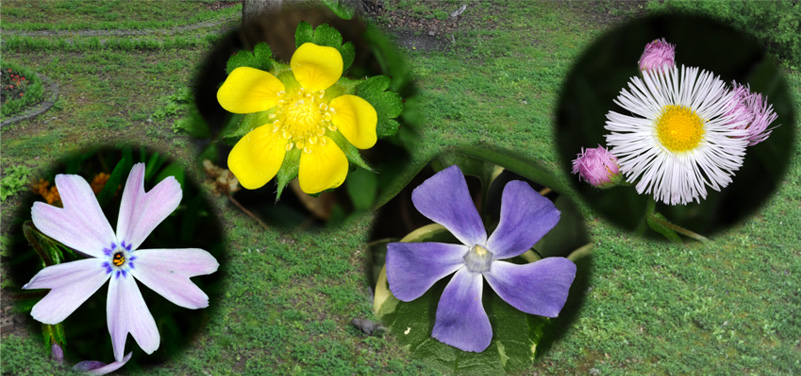
It's spring, when even the weeds are beautiful! Actually the bloom lower left is a thrift bloom, and the bottom one to the right of it is a variety of vinca. But the other two are just weeds.

This spiderwort bloom shows it luxuriant purple color. But it is definitely not the color you see with your eyes in the back yard! Both colors are beautiful, but the color you see in daylight must have some contribution from ultraviolet fluorescence or something which gives your eyes a definite difference in color. Our big bunch of spiderworts are in luxuriant bloom on this date, and have colonized to several points in the back yard. It is definitely a spreading plant, and we're not sure how it does it. |  |
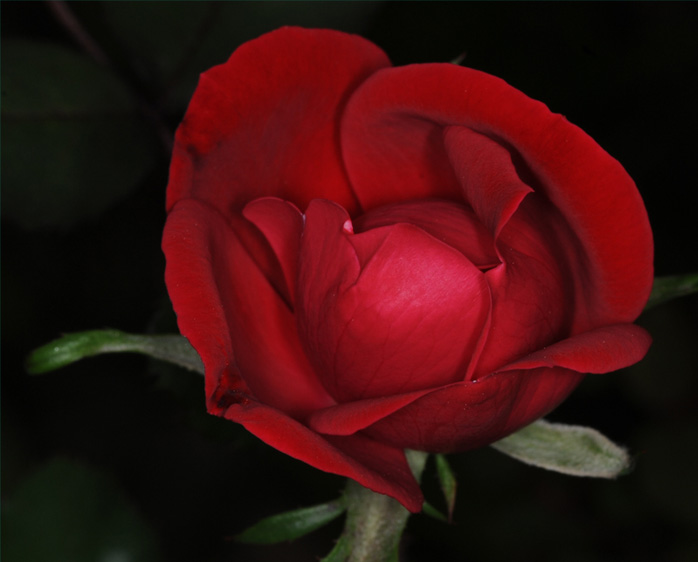 | The beauty of this knockout rose on a backyard bush shows that our domesticated flowers are not being outdone by the wild things. |
Moving back to the wild side, this selection of confederate violets from the front yard represents one of my favorite wildflowers. | 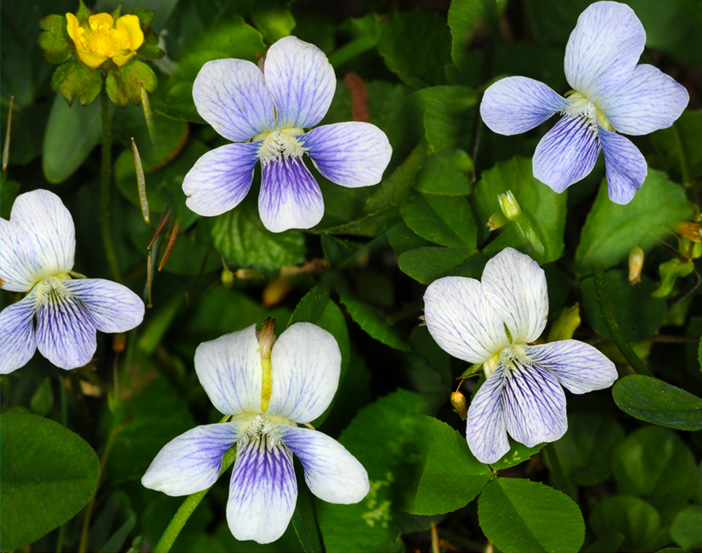 |

April 12. Another thing we anxiously await in the spring is the coming out of the hostas around the trees in the back yard. From bare ground to this lush vegetation is just a few days time, and I think this is the most beautiful time for the hostas. We also got a little red color from the impatiens that I had just planted in the circular planter. An overnight shower made the green of the leaves almost glow in this early morning shot.
| Bon Voyage Luncheon for Bailey and Carole Richardson |
2016